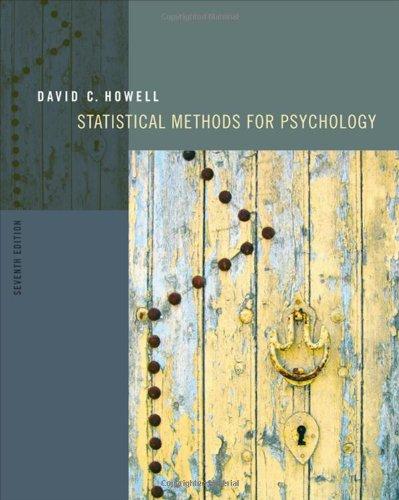In Exercise 7.46 you had data on students who had lost a parent through death, who came
Question:
In Exercise 7.46 you had data on students who had lost a parent through death, who came from a divorced household, or who grew up with two parents. You then ran three separate t tests comparing those groups.
a. Now reanalyze those data using an analysis of variance with GSIT as the dependent variable.
b. How does your answer to this question differ from your answer in Chapter 7?
Use the following material to answer Exercises 11.29–11.31.
Introini-Collison and McGaugh (1986) examined the hypothesis that hormones normally produced in the body can play a role in memory. Specifically, they looked at the effect of posttraining injections of epinephrine on retention of a previously learned discrimination. To oversimplify the experiment, they first trained mice to escape mild shock by choosing the left arm of a Y maze. Immediately after training they injected the mice with either 0.0, 0.3, or 1.0 mg/kg of epinephrine. (The first group was actually injected with saline.) They predicted that low doses of epinephrine would facilitate retention, whereas high doses would inhibit it.
Either 1 day, 1 week, or 1 month after original training, each mouse was again placed in the Y maze, but this time was required to run to the right arm of the maze to escape shock. Presumably the stronger the memory of the original training, the more it would interfere with the learning of this new task and the more errors the subject would make.
There are two data sets for this experiment, and they are described in Appendix Computer Exercises. The original study used 18 animals in the three dosage groups tested after 1 day, and 12 animals in each group tested after intervals of 1 week and 1 month. Hypothetical data that closely reproduce the original results are contained in Epinuneq.dat, although for our purposes there are data for only 7 subjects in the 1.0 mg/kg dose at the 1-month test.
A second data set was created with 12 observations in each of the 9 cells, and is called Epineq.dat. In both cases the need to create data that were integers led to results that are slightly conservative relative to the actual data, but the conclusions with respect to are the same.
Step by Step Answer:







